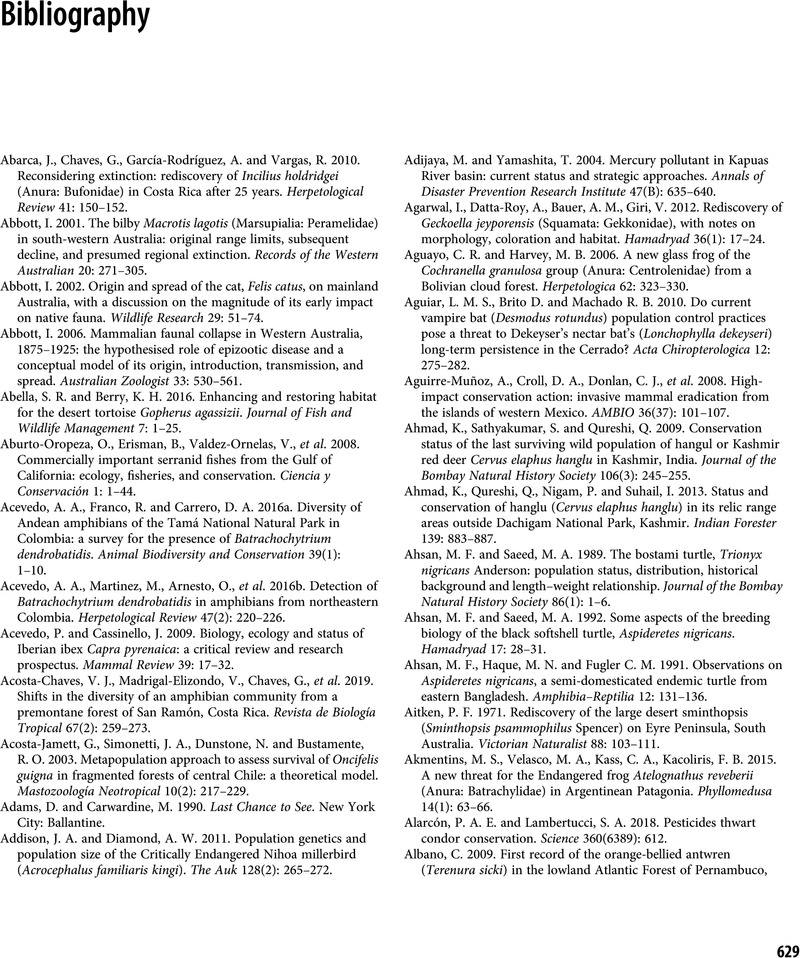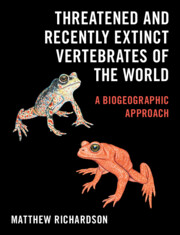Book contents
- Threatened and Recently Extinct Vertebrates of the World
- Threatened and Recently Extinct Vertebrates of the World
- Copyright page
- Dedication
- Contents
- Foreword
- Preface
- Acknowledgements
- Chapter 1 The Arctic Realm
- Chapter 2 The Palearctic Realm
- Chapter 3 The Afrotropical Realm
- Chapter 4 The Madagascan Realm
- Chapter 5 The Indo-Malaysian Realm
- Chapter 6 The Papua-Melanesian Realm
- Chapter 7 The Australian Realm
- Chapter 8 The Polynesian Realm
- Chapter 9 The Nearctic Realm
- Chapter 10 The Caribbean Realm
- Chapter 11 The Neotropical Realm
- Chapter 12 The Patagonian Realm
- Chapter 13 The Antarctic Realm
- Chapter 14 The Oceanic Realm
- Chapter 15 Global Balance
- Bibliography
- Index
- References
- Threatened and Recently Extinct Vertebrates of the World
- Threatened and Recently Extinct Vertebrates of the World
- Copyright page
- Dedication
- Contents
- Foreword
- Preface
- Acknowledgements
- Chapter 1 The Arctic Realm
- Chapter 2 The Palearctic Realm
- Chapter 3 The Afrotropical Realm
- Chapter 4 The Madagascan Realm
- Chapter 5 The Indo-Malaysian Realm
- Chapter 6 The Papua-Melanesian Realm
- Chapter 7 The Australian Realm
- Chapter 8 The Polynesian Realm
- Chapter 9 The Nearctic Realm
- Chapter 10 The Caribbean Realm
- Chapter 11 The Neotropical Realm
- Chapter 12 The Patagonian Realm
- Chapter 13 The Antarctic Realm
- Chapter 14 The Oceanic Realm
- Chapter 15 Global Balance
- Bibliography
- Index
- References
Summary

- Type
- Chapter
- Information
- Threatened and Recently Extinct Vertebrates of the WorldA Biogeographic Approach, pp. 629 - 712Publisher: Cambridge University PressPrint publication year: 2023



